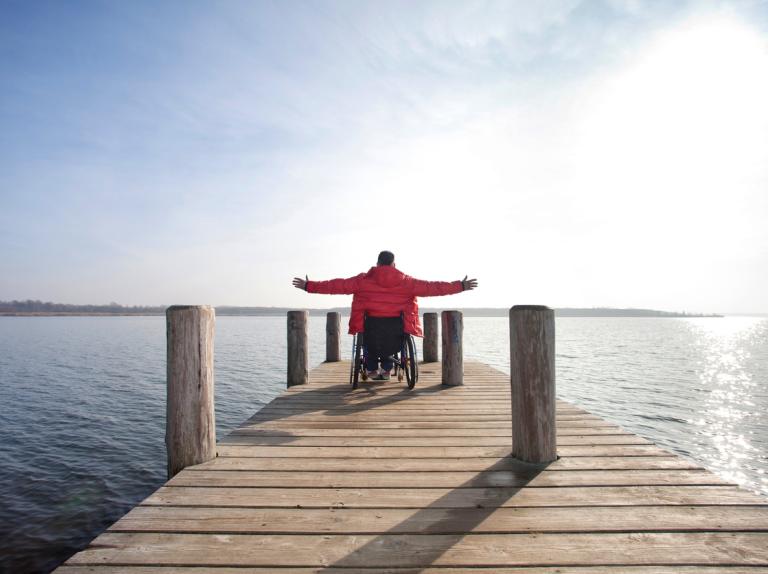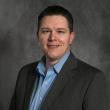
True accessibility goes beyond meeting basic requirements. It’s about creating meaningful, inclusive experiences that make every traveler feel welcomed and valued. This guide outlines key steps for DMOs to move past the checklist mentality in order to build a destination where accessibility becomes an authentic, celebrated part of the experience.
When it comes to accessibility in tourism, it’s easy to fall into the “checklist trap.” WCAG-compliant website? Check. Accessible bathrooms? Check. Wheelchair-friendly entrances? Double-check. But accessibility isn’t just a series of boxes to tick off—it’s about creating meaningful, inclusive experiences that honor the needs of every individual traveler, no matter how unique. That’s where DMOs have the opportunity to shine by thinking beyond the basics and building something that truly resonates.
So, how do you move beyond the checklist mentality and start making deeper, more impactful changes? It’s all about understanding the bigger picture and making progress, one deliberate step at a time.
The following are some key considerations to keep in mind as you start thinking about accessibility at your destination. From understanding the many dimensions of disabilities to building strong partnerships and nailing down the details that make people feel welcome, these strategies can help you move from basic accommodations to true inclusion.

Step 1: Allocate Resources and Assign Clear Ownership
Before diving into the complexities of accessibility, it’s essential to commit the right resources and give someone the responsibility to oversee your initiatives. True accessibility is not a side project, and it requires more than just checking boxes—it demands ongoing attention, time, and a focused team. If you’re going to do it, do it right. Designate a team member or create a task force specifically to manage and advocate for accessibility within your organization. This ensures that your efforts don’t become an afterthought but are treated as a core component of your destination’s experience.
By creating a dedicated accessibility role within your tourism office and making it someone’s primary responsibility, you can drive more targeted initiatives, keep information up-to-date, and respond quickly to feedback. This leads to a more cohesive and authentic approach to inclusion, backed by real, impactful action.
Takeaway #1: Dedicated Resources = Real Progress
Accessibility can’t be a half-hearted effort. If you want to get serious about it, make sure you’re committing the time, budget, and people to drive it forward. An empowered owner means there’s someone accountable who can keep accessibility at the forefront of your DMO’s priorities. Without that, even the best-laid plans can fall through the cracks.
Step 2: Understand the Many Dimensions of Disabilities
The next step is to recognize that disabilities aren’t one-size-fits-all. Too often, the conversation around accessibility lumps people together under one broad label—“people with disabilities.” But in reality, it’s much more complex. Disabilities can impact individuals in vastly different ways: physically, cognitively, sensory-wise, and in terms of mental health. And even within each of these categories, there’s a huge variety of needs, preferences, and lived experiences.
For example, two people with visual impairments may have completely different ways of navigating the world—one might rely heavily on tactile maps, while another may prefer audio cues. And then there are those overlapping needs to consider. A traveler using a wheelchair might also have sensory sensitivities that make navigating a bustling, noisy lobby challenging. What’s the solution? Not treating everyone with the same label as though they’re the same person.
Takeaway #2: Labels Are a Starting Point—Focus on the Person
It’s tempting to categorize people to simplify planning, but accessibility doesn’t work that way. Labels like “mobility issues” or “sensory-friendly” are helpful for getting your bearings, but they don’t capture the complexity of individual needs. Instead of aiming to create a space that meets every checkbox, focus on building a flexible framework that prioritizes individual feedback and adapts over time. The goal should always be to serve people, not labels.
Step 3: Partner with the Right People and Let Them Lead the Way
The most impactful accessibility strategies start with genuine collaboration. Too often, DMOs design accessibility solutions based on what they think people need. But here’s a pro tip: the people you’re designing for are the real experts. That’s why partnerships with advocacy groups, disability experts, and community members are absolutely essential. Think of them as your accessibility compass—guiding you in the right direction.
For example, when Myrtle Beach developed its sensory-friendly travel program, we didn’t just brainstorm ideas in a boardroom and hope for the best. We reached out to local Autism organizations, families, and experts who could give us real insights into what sensory-friendly travel should look like. They didn’t just validate our approach—they helped shape it from the ground up. This level of involvement ensures that what you’re offering is actually useful, rather than just looking good on paper.
Takeaway #3: Start Small and Build with Stakeholders
There’s no need to tackle everything at once. Choose a specific challenge—like making attractions more accessible for people with Autism or improving physical accessibility at one beach. Then, bring in the right voices to guide your efforts. Ask for feedback, listen actively, and be prepared to change course based on what you learn. Small, focused, and well-executed changes will always have a bigger impact than grandiose, one-size-fits-all solutions.
Step 4: Zero In on the Details and Ensure Key Information is Accessible and Accurate
Here’s where many accessibility plans miss the mark: the little things. We often think that big, visible changes—like installing ramps or creating accessible paths—are the answer. But for many travelers, it’s the small, seemingly insignificant details that make the difference between a good trip and a frustrating one. What people really need is information. Clear, precise, and easy-to-find details about what’s accessible, what’s not, and what options exist. The more transparent you are about what’s available, the easier it is for travelers to plan.
Take bed heights, for example. For some travelers with mobility issues, a high bed can make it easier to transfer from a wheelchair. For others, it can make getting in and out nearly impossible. The best solution? Share that information upfront so travelers can decide for themselves what works best. Or, if your properties offer different bed configurations, highlight that in your marketing. That way, people know what to expect and can plan accordingly.
This is why creating dedicated accessibility resources—like landing pages, maps, and guides—is so crucial. Organizations like TravelAbility have done an excellent job encouraging destinations to create accessibility landing pages and detailed guides that compile this critical information in one place. Their Accessibility Playbook, created in partnership with Destinations International, is a fantastic resource for DMOs looking to improve their approach, and it’s worth a read if you’re looking to up your game. By centralizing and sharing granular details about accessibility features, you empower travelers to make informed decisions and reduce the uncertainty that often comes with travel planning.
Takeaway #4: Information is Empowerment
Don’t just say, “We’re accessible!” Break down exactly how you’re accessible, and in what ways. For example, instead of a generic “accessible bathroom,” provide details like “roll-in shower with a handheld showerhead, grab bars, and a shower bench.” Being clear about these specifics allows travelers to make informed decisions and ensures they aren’t met with unpleasant surprises when they arrive. The more detailed and organized your resources, the more likely it is that travelers with disabilities will feel confident choosing your destination.
Step 5: Embrace the Ongoing Process
Creating a truly accessible destination isn’t something you achieve overnight—or ever “complete,” for that matter. It’s an ongoing process that requires constant learning, tweaking, and evolving based on feedback. That’s why it’s important to frame your efforts as a journey rather than a destination. There’s no “final level” of accessibility where you get to pat yourself on the back and call it done.
Instead, think of it like an adventure. Start somewhere, learn from the experience, and build from there. Maybe you focus first on making your events more inclusive, then move on to accommodations, then attractions. Gather feedback after each initiative and adapt based on what you hear. You don’t have to tackle it all at once, and you don’t have to be all things to all people. What matters is that you’re committed to making continuous improvements.
Takeaway #5: Focus, Learn, and Iterate
Choose one aspect of accessibility to start with. Make your best effort, gather feedback, and use that insight to guide your next steps. It’s better to take a single issue—like enhancing accessibility at your attractions or making your downtown area more wheelchair-friendly—and do it well than to try and solve everything at once.

Final Thought: It’s About Progress, Not Perfection
Accessibility is about more than physical modifications—it’s about changing the way we approach inclusion altogether. It’s not just about meeting the minimum standards; it’s about creating environments where everyone feels welcome, valued, and empowered to experience everything your destination has to offer. So, take a deep breath, start small, and remember: it’s not about being perfect—it’s about making meaningful progress, one thoughtful step at a time.
Submit Your Thought Leadership

Share your thought leadership with the Destinations International team! Learn how to submit a case study, blog or other piece of content to DI.


